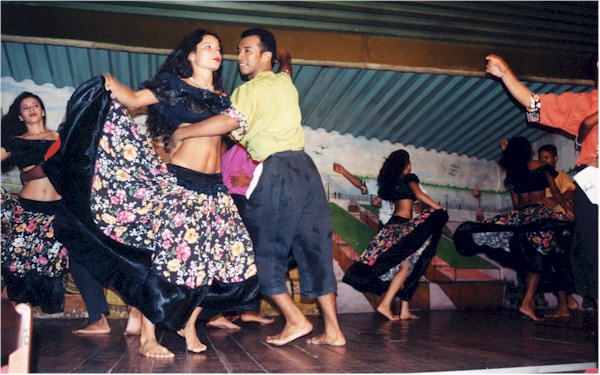
Samba is what immediately comes to mind at the very mention of Brazilian dance. Some believe that samba was derived from the word 'semba', which signifies a naval bump in Kimbundo, the African Bantu language, and symbolizes the invitation to dance from a man to a woman. 'Semba' is also an infinitive of 'kusamba', which means 'to pray', or to appeal for the favor of the Gods or ancestors by singing and dancing. So, the dance was an indispensable part of the religious ceremonies.
Brazil was a colony of the Portuguese during the period 1500 to 1822, and African slaves, mainly were brought to Brazil from Angola by the Portuguese rulers. When the African slaves reached Brazil, they were converted into Christians, and prevented from worshiping their traditional gods by the Portuguese government. They continued to carry out religious practices in the guise of parties. But, soon, they came under the suspicion of the authority, as a result of which, such parties were often raided by the police. Eventually, they tried to preserve the secret rhythms of samba by combining them with other musical forums, which over a period of time gave birth to a series of dances and music genres.
With the end of slavery in 1888, many schools for samba dance were established and were known as 'Escolas de Samba'. Initially, samba was regarded as an improper and obscene dance by the upper class Brazilians, and hence was performed in secret societies. But, in 1917, samba carnavalesco was presented to the public by Ernesto dos Santos, a well-known musician of Brazil. In 1920, its popularity grew immensely, and in the course of time, it received international recognition as a musical genre and dance form. Samba has also evolved into different sub genres like Partido alto, Pagode, Samba de breque, Samba-canção, Samba-enredo and Samba de Gafieira, etc.
Samba is usually performed by couples, reflecting each other's steps. The rhythm is 2/4 at a time, or 2 beats to a bar of music. There are three steps to every bar of music, or three steps to two beats. The first step performed by women involves sliding of the right foot smoothly and placing the weight of the entire body on it. In the second step, the left foot is slided slowly and the body weight is shifted to it. In the third step, the right foot which has been raised is allowed to come back to the floor with the entire body weight placed on it. In men, the steps are similar but, they start with the left foot unlike women.


